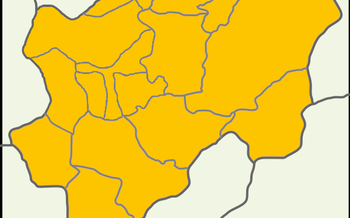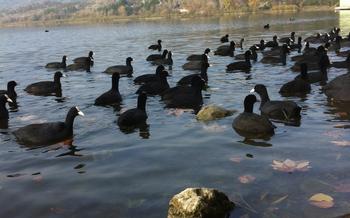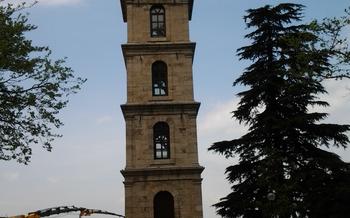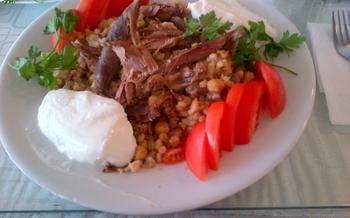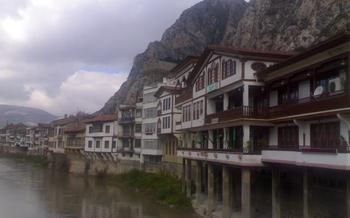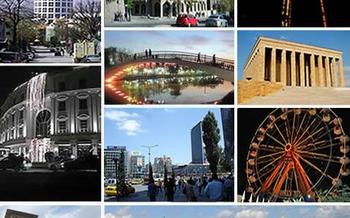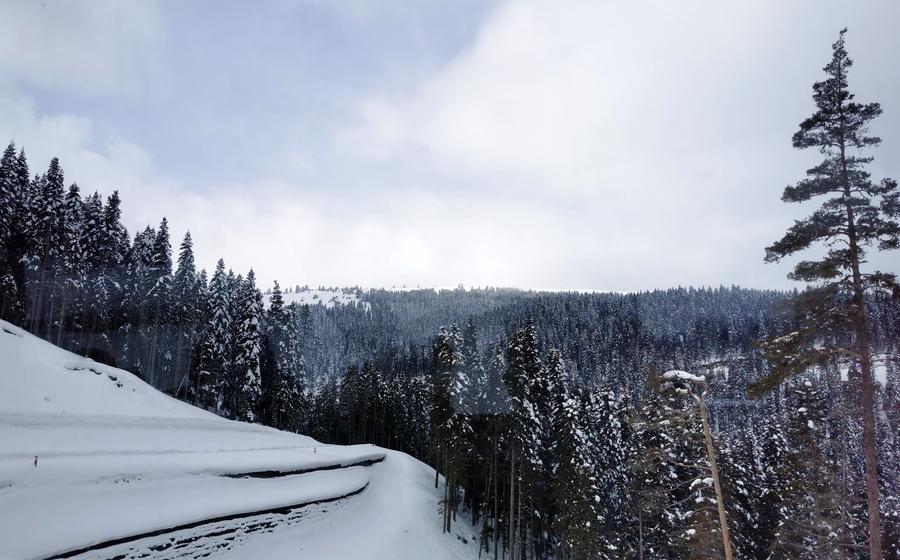
Maruf Village Historical Water Mills
- Maruf Village Historical Water Mills: A Unique Experience
- Stepping Back in Time: Exploring the Village
- The Water Mills: A Testament to Turkish Engineering
- Witnessing the Magic of the Water Mills
- A Culinary Journey: Local Cuisine and Hospitality
- A Photographer's Paradise: Capturing the Village's Beauty
- A Walk Through History: The Village's Historical Sites
- Off the Beaten Path: Exploring the Surrounding Area
- A Village Festival: Celebrating Maruf's Culture
- A Peaceful Retreat: Accommodation in the Village
- Local Customs and Etiquette: Respecting the Village's Traditions
- Preserving the Heritage: Sustainable Tourism Practices
- Planning Your Visit: Essential Information
- Insider Tip: Unveiling a Hidden Gem
Maruf Village Historical Water Mills: A Unique Experience
In the heart of Turkey, nestled amidst rolling hills and verdant valleys, lies the picturesque village of Maruf, renowned for its historical water mills. These mills, a testament to Turkish ingenuity and craftsmanship, have stood the test of time, preserving a rich legacy of traditional milling practices. Step into this enchanting village and embark on a journey that blends history, nature, and cultural heritage, offering an unforgettable experience for every traveler.
Location and Accessibility
Maruf village is situated in the Çankırı province of Turkey, approximately 120 kilometers northeast of Ankara, the capital city. The village is easily accessible by road, with well-maintained highways connecting it to major cities and towns. Visitors can opt for a scenic drive through the countryside, enjoying the breathtaking views of the Anatolian landscape.
The Natural Beauty of Maruf Village
Maruf village is a haven of natural beauty, surrounded by lush forests, meandering rivers, and rolling green hills. The village itself is nestled in a picturesque valley, with the sound of flowing water creating a tranquil ambiance. Visitors can stroll along the cobblestone streets, admiring the traditional houses and taking in the fresh air.
The Village's Historical and Cultural Heritage
Maruf Village boasts a rich historical and cultural heritage, with its roots dating back to ancient times. The village has been continuously inhabited for centuries, and its traditions and customs have been passed down from generation to generation. Visitors can explore the village's mosques, historical landmarks, and ancient ruins, gaining a glimpse into the village's fascinating history.
Stepping Back in Time: Exploring the Village
Strolling through the narrow, cobblestone streets of Maruf Village is like taking a journey back in time. The traditional houses, built from local stone and wood, line the streets, each with its unique charm and character. The walls of these houses are adorned with intricate carvings and colorful tiles, showcasing the village's rich artistic heritage.
The villagers are renowned for their hospitality and warmth, always eager to welcome visitors and share their stories and traditions. The village is home to several mosques, each with its distinct architectural style and history. These mosques serve as important gathering places for the community, where locals come together for prayers and celebrations.
Other landmarks in the village include the village square, where locals gather to socialize and trade goods, and the old schoolhouse, which has been transformed into a museum showcasing the village's history and culture. Exploring these landmarks offers visitors a deeper understanding of Maruf Village's unique identity and its significance in the region.
The Water Mills: A Testament to Turkish Engineering
The water mills of Maruf Village stand as a testament to the ingenuity and engineering prowess of the Turkish people. Constructed centuries ago, these mills harnessed the power of water to grind wheat into flour, providing a vital service to the local community.
Each mill consists of a large stone wheel mounted on a horizontal axis. Water from the river is diverted through a channel and directed onto the wheel, causing it to rotate. The wheel is connected to a millstone, which grinds the wheat into flour as it turns. The millstones are made of hard stone, such as granite or basalt, and are carefully shaped to produce the desired consistency of flour.
The water mills of Maruf Village are a testament to the sustainable and efficient use of natural resources. They rely solely on the power of water to operate, without the need for electricity or fossil fuels. This makes them an environmentally friendly alternative to modern milling methods.
Witnessing the Magic of the Water Mills
As you approach the water mills, the rhythmic sound of water flowing and the gentle creaking of wooden machinery fill the air, creating a mesmerizing symphony of sights, sounds, and smells. Step inside one of the mills, and you'll be transported back in time as you witness the ancient art of milling wheat into flour.
The millers, with their weathered hands and years of experience, expertly tend to the millstones, carefully adjusting the flow of water to ensure the perfect grind. Watch in awe as the wheat grains are transformed into fine flour, the air filled with the warm, nutty aroma of freshly ground goodness.
The traditional methods used by the millers are a testament to the ingenuity and resourcefulness of our ancestors. They skillfully manipulate the water flow using wooden levers and gates, harnessing the power of nature to grind the wheat into a fine powder.
The freshly ground flour is then collected and sifted, ready to be used in a variety of culinary creations. Its unique flavor and texture add an extra layer of deliciousness to local bread, pastries, and other delicacies.
A Culinary Journey: Local Cuisine and Hospitality
Maruf Village is not only known for its historical water mills but also for its culinary delights. The village's traditional dishes and delicacies are a testament to the region's rich culinary heritage. Visitors can savor freshly baked bread and pastries made with flour ground in the village's water mills. The village's restaurants and guesthouses offer a range of local specialties, including hearty stews, grilled meats, and fresh salads. The warmth and hospitality of the villagers are an integral part of the dining experience. They are always eager to share their stories and traditions with visitors, making a meal in Maruf Village a truly memorable and immersive experience.
Here are some tips for dining in Maruf Village and savoring the local flavors:
-
Freshly Ground Flour: Ask for dishes made with freshly ground flour to experience the unique taste and aroma.
-
Local Specialties: Try traditional dishes like "Çankırı Mantısı" (dumplings), "Yaprak Sarma" (stuffed vine leaves), and "Ankara Tava" (a hearty meat and vegetable stew).
-
Village Restaurants: Visit the local restaurants and guesthouses to enjoy authentic home-cooked meals prepared with fresh, local ingredients.
-
Village Market: Explore the village market for fresh produce, homemade jams and pickles, and local honey.
-
Etiquette: Be respectful of local customs and traditions. Always ask permission before taking photos of people or their homes. Show appreciation for the hospitality by offering a small gift or a donation to the village mosque or school.
A Photographer's Paradise: Capturing the Village's Beauty
The picturesque landscapes of Maruf Village, with its rolling hills, lush greenery, and charming water mills, make it a photographer's paradise. The village's unique architecture, with its traditional houses and cobblestone streets, provides a stunning backdrop for capturing the essence of rural Turkey.
The water mills themselves are a photographer's dream, offering endless opportunities for capturing the beauty of these historical structures. The intricate details of the mill wheels, the flowing water, and the surrounding greenery create a picturesque scene that is sure to impress.
Photographers can also capture the village's unique atmosphere by taking candid shots of the friendly locals going about their daily lives. The village's mosques, with their intricate architecture and colorful tiles, also make for beautiful photographs.
For Instagram enthusiasts, Maruf Village offers a plethora of Instagrammable spots. The water mills, the village's narrow alleys, and the stunning views from the surrounding hills are just a few of the many photo opportunities that await.
Tips for Capturing the Best Shots:
-
Use a wide-angle lens to capture the expansive landscapes and the grandeur of the water mills.
-
Experiment with different angles to create unique perspectives and compositions.
-
Take advantage of the golden hour (just after sunrise or just before sunset) to capture the warm, soft light that enhances the beauty of the village.
-
Look for details that tell a story, such as the intricate carvings on the mill wheels or the expressions on the faces of the villagers.
-
Don't be afraid to ask the locals for permission to take their photos. They are usually happy to oblige and may even offer to pose for you.
A Walk Through History: The Village's Historical Sites
Venturing into Maruf Village is like stepping into a living museum. Ancient ruins and historical landmarks stand as silent witnesses to the village's rich past. Explore the remnants of a Byzantine church, its intricate stone carvings whispering tales of a bygone era. Discover the remnants of an old caravanserai, once a bustling hub for weary travelers along the Silk Road. Each stone, each crumbling wall holds stories of civilizations past, waiting to be unearthed.
Unravel the legends associated with these historical sites. The villagers will gladly share tales of hidden treasures, heroic battles, and mystical creatures that inhabit the village's folklore. Learn about the role Maruf Village played in Turkey's history, from its humble beginnings as a small farming community to its strategic importance as a trade route.
Witness the dedication of local historians and archaeologists as they work tirelessly to preserve the village's heritage. Restoration projects aim to breathe new life into these ancient structures, ensuring that future generations can continue to marvel at the village's historical significance.
Off the Beaten Path: Exploring the Surrounding Area
Venturing beyond the confines of Maruf Village unveils a treasure trove of natural wonders and hidden gems waiting to be discovered. For those seeking a deeper immersion into the region's beauty, several captivating destinations lie within easy reach.
A short hike from the village leads to a secluded waterfall, where the cascading waters create a mesmerizing symphony. Surrounded by lush greenery and the gentle chirping of birds, this tranquil spot invites visitors to reconnect with nature and find solace amidst its serene embrace.
For those with a thirst for adventure, the nearby mountains offer a challenging yet rewarding hiking experience. Marked trails wind through dense forests, leading to breathtaking viewpoints that offer panoramic vistas of the surrounding countryside. The crisp mountain air invigorates the senses, while the stunning scenery provides a feast for the eyes.
A drive further afield reveals charming neighboring villages, each with its unique character and traditions. From picturesque hamlets nestled amidst rolling hills to vibrant market towns brimming with local produce and handicrafts, these villages offer a glimpse into the authentic Turkish way of life.
History buffs can embark on a journey to nearby historical sites, such as ancient ruins or medieval castles. These relics of the past tell captivating tales of bygone eras and provide a tangible connection to Turkey's rich cultural heritage.
Whether seeking tranquility in nature, embracing adventure on hiking trails, or delving into the depths of history, the surroundings of Maruf Village offer a wealth of experiences for every traveler.
A Village Festival: Celebrating Maruf's Culture
The annual Maruf Village Festival is a vibrant celebration of the village's rich culture and traditions. Held during the summer months, this festival attracts visitors from near and far to experience the unique charm of Maruf Village.
During the festival, the village comes alive with music, dance, and performances. Local musicians and dancers showcase their talents, while visitors are encouraged to join in the festivities. Traditional food stalls offer a variety of local delicacies, allowing visitors to savor the flavors of Maruf's cuisine.
Artisans from the village and surrounding areas display their handmade crafts, providing a glimpse into the region's traditional arts and skills. Visitors can purchase unique souvenirs, such as pottery, textiles, and jewelry, to remember their visit to Maruf Village.
The festival is a wonderful opportunity to immerse oneself in the vibrant culture of Maruf Village. Visitors can interact with the friendly locals, learn about their customs and traditions, and experience the warm hospitality that the village is renowned for.
To make the most of the festival, it is advisable to plan your visit in advance. Accommodation in the village is limited, so it is recommended to book early to secure a place to stay. The festival is usually held over a weekend, so it is best to arrive on Friday or Saturday to catch all the festivities.
A Peaceful Retreat: Accommodation in the Village
A Unique Stay in Traditional Village Houses: Maruf Village offers a range of charming guesthouses and homestays that allow visitors to experience the authentic ambiance of the village. These traditional houses are beautifully restored, showcasing the village's architectural heritage while providing comfortable accommodation for guests.
Immerse Yourself in Village Life: Staying in a traditional village house offers guests a unique opportunity to immerse themselves in the daily life of Maruf Village. Visitors can interact with the villagers, learn about their customs and traditions, and experience the tranquility of village life firsthand.
Modern Amenities in a Traditional Setting: Despite maintaining their traditional charm, these guesthouses and homestays are equipped with modern amenities to ensure a comfortable stay for visitors. Private bathrooms, Wi-Fi access, and cozy bedding are just a few of the amenities available to guests.
Savoring Local Cuisine: Many guesthouses and homestays offer traditional Turkish cuisine, allowing guests to savor the flavors of the village. Freshly baked bread made with flour ground in the village's water mills is a must-try for visitors.
Tips for Booking Accommodation: To ensure a memorable stay, it's advisable to book accommodation in advance, especially during peak tourist seasons. Visitors can choose from various guesthouses and homestays that suit their budget and preferences.
Local Customs and Etiquette: Respecting the Village's Traditions
Venturing into Maruf Village, it is crucial to be mindful of the local customs and traditions that shape its unique identity. As a visitor, respecting these traditions ensures a harmonious and enjoyable experience for both you and the villagers.
Dress modestly and appropriately, covering your shoulders and knees, especially when visiting religious sites or interacting with elders. This shows respect for the village's conservative values.
When greeting locals, offer a warm handshake or a nod, accompanied by a friendly "Merhaba" (Hello). Be prepared to exchange pleasantries and show genuine interest in their lives.
In conversations, maintain a respectful tone and avoid sensitive topics such as politics or religion. Remember that the villagers are proud of their heritage and may have different perspectives than you.
Photography is generally permitted, but it's essential to ask for permission before taking pictures of people, especially women. Respect their privacy and avoid capturing images that might be considered intrusive or disrespectful.
When visiting mosques or other religious sites, observe the local customs. Remove your shoes before entering, dress appropriately, and maintain a quiet and reverent demeanor.
By embracing local customs and showing cultural sensitivity, you not only demonstrate respect for the villagers but also contribute to preserving the village's unique traditions and way of life.
Preserving the Heritage: Sustainable Tourism Practices
In the picturesque village of Maruf, the preservation of its rich heritage goes hand in hand with sustainable tourism practices. As a traveler, you can contribute to the village's long-term well-being by embracing responsible travel.
Respect the Environment:
-
Tread Lightly: Minimize your environmental impact by being mindful of your actions. Avoid littering, conserve water and energy, and opt for eco-friendly transportation options when possible.
-
Support Local Initiatives:
-
Empower the Community: Engage with local businesses and initiatives that promote sustainable practices. Consider staying in locally-owned guesthouses, dining at traditional restaurants, and purchasing souvenirs from artisans. This supports the local economy and preserves the village's unique character.
-
Educate Yourself:
-
Learn About the Culture: Take the time to learn about Maruf Village's cultural heritage and traditions. This knowledge will deepen your appreciation for the village and help you interact with locals respectfully.
-
Spread the Word:
-
Be an Ambassador: Share your experiences of sustainable travel in Maruf Village with others. Encourage your friends and family to visit responsibly, and advocate for the preservation of its cultural and natural treasures.
By embracing sustainable practices, you can help ensure that the beauty and charm of Maruf Village remain intact for generations to come.
Planning Your Visit: Essential Information
Timing Your Visit: Plan your trip for the spring or autumn months (April-May or September-October) to enjoy pleasant weather and avoid summer crowds.
Transportation: Reach Çankırı by bus from major cities like Ankara or Istanbul, and then take a local bus or taxi to Maruf Village.
Entrance Fees: There are no entrance fees to visit the water mills or the village. However, consider supporting local initiatives by purchasing souvenirs or dining at village restaurants.
Tour Guides: While not mandatory, hiring a local guide can provide insights into the history and traditions of the village.
Local Experts: Connect with the Maruf Village Tourism Association or local cultural organizations for information, guided tours, and recommendations.
Essential Tips: Remember to carry comfortable shoes for walking on cobblestone streets, a camera to capture the village's beauty, and a reusable water bottle to stay hydrated.
Insider Tip: Unveiling a Hidden Gem
Beyond the well-known attractions, Maruf Village holds a secret gem that offers a truly unforgettable experience. Nestled amidst the rolling hills, just a short walk from the village center, lies a hidden waterfall that cascades down into a serene pool of crystal-clear water. The sound of the rushing water and the mist that fills the air create a magical atmosphere that transports visitors to a forgotten realm.
To reach this hidden gem, follow the cobblestone path that leads out of the village towards the nearby forest. After a leisurely walk of about 15 minutes, you will come across a small signpost that points the way to the waterfall. From there, a short hike through the dense foliage will take you to the secluded paradise.
The waterfall is a sight to behold, especially during the spring when the snowmelt swells the river that feeds it. The water plunges over a rocky cliff, creating a mesmerizing spectacle. The pool at the bottom is perfect for a refreshing dip on a hot summer day or a peaceful picnic lunch surrounded by nature's beauty.
This hidden waterfall is a testament to the unspoiled beauty of Maruf Village and the surrounding region. It is a place where visitors can escape the hustle and bustle of daily life and reconnect with the tranquility of nature. Whether you choose to admire the waterfall from afar or take a dip in its cool waters, this hidden gem is sure to leave you with lasting memories of your time in Maruf Village.
